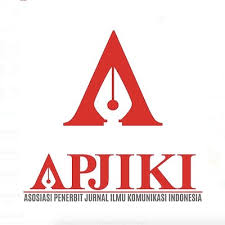THE FUTURE OF DIGITAL MARKETING COMMUNICATION: STRATEGIES FOR ENGAGING THE MODERN CONSUMER
DOI:
https://doi.org/10.70489/v975we40Keywords:
digital marketing communication, artificial intelligence, omnichannel, consumer engagementAbstract
This study aims to explore the trends and strategies of effective digital marketing communication in increasing modern consumer engagement. The method used in this study is the Systematic Literature Review (SLR), which includes the identification, selection, and analysis of relevant studies from various academic and industry sources using the PRISMA approach. The results of the study indicate that effective digital marketing communication strategies rely on three main pillars: data-driven personalization, omnichannel integration, and ethical engagement. The use of artificial intelligence (AI) and machine learning has enabled more personalized and predictive marketing experiences, increasing consumer engagement and loyalty. In addition, social media-based marketing and user-generated content have proven to be more effective than conventional advertising methods. However, challenges such as data privacy, digital fatigue, and algorithmic filtering are still major concerns for the digital marketing industry.
References
BrightLocal. (2022). Local Consumer Review Survey 2022: Online Reviews Statistics and Trends. Retrieved from https://www.brightlocal.com
Chaffey, D., & Smith, P. (2022). Digital Marketing: Strategy, Implementation, and Practice (8th ed.). Pearson.
Comscore. (2023). The Rise of Voice Search: Trends and Forecasts for 2025. Comscore Digital Reports.
Edelman, D., & Singer, M. (2022). Competing on Customer Journeys: Digital Transformation in Marketing Communication. Harvard Business Review.
Gartner. (2023). Augmented Reality in Digital Marketing: Trends and Future Opportunities. Gartner Research.
Global Digital Report. (2023). The State of Digital Consumer Engagement: Trends and Statistics. Retrieved from https://www.digitalreport.com
GlobalWebIndex. (2023). The Future of Mobile-First Engagement and Consumer Preferences. Retrieved from https://www.globalwebindex.com
Kaplan, A. M., & Haenlein, M. (2022). Users of the World, Unite! The Challenges and Opportunities of Social Media. Business Horizons.
Kaplan, A. M., & Haenlein, M. (2023). Marketing in the Metaverse: The Future of Consumer Engagement. Business Horizons, 66(3), 234-251.
Kotler, P., Kartajaya, H., & Setiawan, I. (2021). Marketing 5.0: Technology for Humanity. Wiley.
Lemon, K. N., & Verhoef, P. C. (2021). Understanding Customer Experience Throughout the Digital Consumer Journey. Journal of Marketing, 85(2), 22-41.
Lubis, R. M., Isro, M. I., Al Fayyad, M., Fadli, A., Sazali, H., & Andinata, M. (2022). Strategi Pemasaran Himpunan Mahasiswa Bahasa Jepang dan Sastra Jepang USU dalam Mempromosikan Event Bunkasai USU 2022. Jurnal Pendidikan Tambusai, 6(2), 14249-14266.
Moher, D., Liberati, A., Tetzlaff, J., & Altman, D. G. (2009). Preferred Reporting Items for Systematic Reviews and Meta-Analyses: The PRISMA Statement. PLoS Medicine, 6(7), e1000097.
Pew Research Center. (2023). Consumer Attitudes Towards Data Privacy and Digital Marketing Ethics. Retrieved from https://www.pewresearch.org
Pulizzi, J. (2021). Epic Content Marketing: How to Tell a Different Story, Break Through the Clutter, and Win More Customers by Marketing Less. McGraw-Hill.
Ritonga, A. R., Veronica, A., Ginting, L. D. C. U., Dalimunthe, M. A., & Nasution, L. H. (2024). Library promotion in the development of the Universitas Sumatera Utara towards a world-class university. Journal of Infrastructure, Policy and Development, 8(6), 4149.
Ritonga, A., Thamrin, M., Siahaan, H., Dalimunthe, M., & Nur’aini, N. (2024). Promotion of ecotourism and communication policy in increasing tourists in Indonesia. Journal of Infrastructure, Policy and Development, 8(8), 4764.
Statista. (2023). Global Digital Population as of 2023: Internet and Social Media Users Worldwide. Retrieved from https://www.statista.com
Sintia, D. I., Saputri, R. P., Alhafidzh, A., Dalimunthe, M. A., & Sazali, H. (2022). Analisis Strategi Komunikasi Pemasaran dalam Peningkatan Pariwisata Melalui Media Sosial di Kabupaten Langkat. Professional: Jurnal Komunikasi dan Administrasi Publik, 9(1), 169-174.
Thomas, J., & Harden, A. (2008). Methods for the Thematic Synthesis of Qualitative Research in Systematic Reviews. BMC Medical Research Methodology, 8(1), 45.
Tranfield, D., Denyer, D., & Smart, P. (2003). Towards a Methodology for Developing Evidence‐Informed Management Knowledge by Means of Systematic Review. British Journal of Management, 14(3), 207-222.
Verhoef, P. C., Kannan, P. K., & Inman, J. J. (2021). From Multi-Channel to Omnichannel Retailing: Implications for Digital Marketing Communication. Journal of Retailing, 97(1), 42-61.
Downloads
Published
Issue
Section
License
Copyright (c) 2024 Feni Khairifa (Author)

This work is licensed under a Creative Commons Attribution-ShareAlike 4.0 International License.








